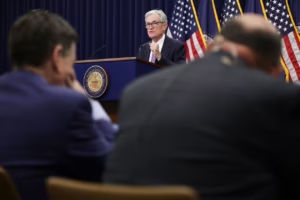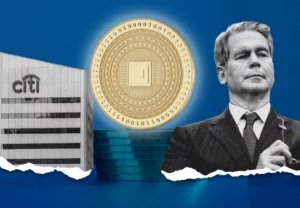The numbers: The Federal Reserve’s decision to postpone interest rate decreases until the fall was probably solidified when a key inflation indicator showed a marginally higher increase in May than Wall Street had anticipated.
The Bureau of Economic Analysis said on Friday that the PCE index, the Fed’s preferred inflation indicator, increased by a scant 0.1% last month. It was the third consecutive gain of less than 0.1%.
However, the so-called core rate of inflation, which increased by 0.2% in May, is given more weight by the Fed. The core rate is seen to be a more accurate predictor of future inflation since it does not include the unpredictable prices of food and energy.
The 12-month inflation rate increased slightly to 2.3%. Core inflation increased from 2.6% to 2.7% annually.
Several months into the largest trade battle in decades, neither metric is indicating any significant issues, despite moving further away from the Fed’s 2% target.
Inflation would normally be low enough to encourage the Fed to lower a major U.S. interest rate that affects credit card, mortgage, and other loan borrowing prices. The sale of homes and other expensive expenses has been slowed by high rates.
However, Fed officials continue to believe that high U.S. tariffs will increase inflation, and they believe that we will soon begin to see evidence of this. To find out if they are correct, they intend to wait a time before lowering rates.
“We should start to see this over the summer, in the June numbers and the July numbers,” Fed Chair Jerome Powell stated during this week’s congressional hearing.
Important information: The Fed considers the PCE, officially known as the personal-consumption expenditures price index, to be the most accurate indicator of future inflation patterns.
Because food and energy prices frequently fluctuate and might skew the headline figure, the central bank closely monitors the core gauge.
Big picture: The Fed is hesitant to lower interest rates until it has a better understanding of how tariffs will impact consumer prices and the larger U.S. economy, even though the inflation rate is near its target.
The most recent PCE data most likely maintains the status quo. Despite demands from two senior central bank officials to contemplate a rate cut in July, investors anticipate that the Fed will wait until September to do so for the first time this year.
It is likely that the economy would benefit from lower borrowing costs. Because of the slowing economy, companies are employing fewer people. On Friday, the government also revealed a startling drop in May consumer expenditure.
Considering the future: “Today’s report is not good for economic activity and inflation and will continue to keep the Federal Reserve on the sidelines for now,” Raymond James head economist Eugenio Aleman stated.
Market reaction: Following the PCE report, gains were trimmed from Friday’s opening higher openings for the Dow Jones Industrial Average and S&P 500.
The 10-year Treasury note’s yield (BX:TMUBMUSD10Y) increased little to 4.26%.





